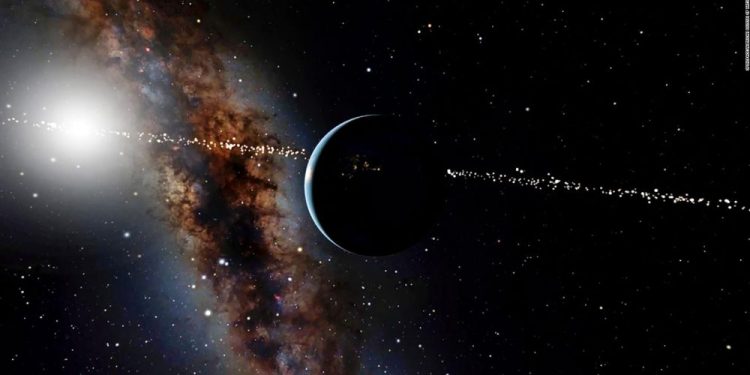Astronomers have compiled a list of 2,034 star systems in which presumed alien civilizations could have or can see the passage of the Earth across the disk of the Sun.
It turns out that 46 such stars are located within a hundred light-years and can not only see the transits of the Earth but also register radio emission from it.
Most of the exoplanets known to date have been found using the transit photometry method. It consists of the fact that the telescope tracks short-term periodic drops in the brightness of stars caused by the passage of planets across their disk.
In addition, the transit method allows spectroscopic studies of exoplanet atmospheres, which can provide information on their composition and suitability for habitability. The curious thing is that alien civilizations could easily use or have used the same method to find Earth.
Lisa Kaltenegger of the Carl Sagan Institute and Jackie Faherty of the American Museum of Natural History published the results of a search for star systems in which an observer could see the transit of the Earth across the disk of the Sun.
Astronomers have previously conducted a similar study using data from the TESS space telescope and the second release of data from the Gaia space telescope. In the new work, scientists used the third edition of the Gaia telescope data and tried to understand which systems are able to see the transit of the Earth and how long it can last.
Alien civilizations from thousands of star systems could have already discovered Earth
Scientists have identified 2,034 stars within 325 light-years of the Sun that have been or will be in the Earth’s transit zone (a strip of space along the ecliptic) for ± five thousand years.
Of these, 313 objects were in this zone in the past, 319 will fall into it in the future, and 1402 will be in the zone for some time.
Among these stars, there are 94 stars of spectral class G (like our Sun), 12 A-class, 2 class B, 87 class F, 102 class K, 1520 red dwarfs, 8 brown dwarfs, and 109 white dwarfs.
Observers in 1,402 star systems can currently see the transit of the Earth, including 128 G-stars and 1,050 red dwarfs. 117 objects from the catalog are within a hundred light-years from the Sun, of which 46 are in the transit zone of the Earth and are capable of registering radio waves from our planet. Among them, there are two class F stars, 3 class G, 2 class K, and 34 red dwarfs.
Seven of the 2,034 stars have exoplanets, with four being within 100 light of the Sun. In particular, Ross 128, located 11 light-years from the Sun, has an Earth-like exoplanet, a hypothetical observer on which could see the transit of the Earth through the Sun over 2,158 years – from 3,057 to 900 years ago.
The star Teegarden, located at a distance of 12.5 light-years from the Sun, has two Earth-like exoplanets at once, observers on which can begin to register the passage of the Earth through the Sun after 29 years and do so for 410 years.
The famous TRAPPIST-1 system, possessing seven Earth-sized exoplanets, four of which are in the habitable zone, will enter the Earth’s transit zone in 1642 years and remain there for 2371 years.
The researchers note that they set a time frame in terms of the development of human civilization, and observation of the Earth as a transiting planet by aliens could classify it as a potentially habitable world over the past billion years due to the accumulation of oxygen and ozone, which are considered biomarkers.
At the same time, the analysis shows that even the stars closest to the Sun spend more than a thousand years in an advantageous position (they can see the transit of the Earth through the Sun), which gives hypothetical extraterrestrial intelligent beings a long time to identify the Earth as an interesting planet.
Sources:
• Drake, N. (2021, June 23). Astronomers identify the stars where any aliens would have a view of Earth. Science.
• Kaltenegger, L., & Faherty, J. K. (2021, June 23). Past, present, and future stars that can see Earth as a transiting exoplanet. Nature News.
• Lanese, N. (2021, June 23). Aliens in 1,700 star systems could have seen civilization emerge on Earth. LiveScience.
• Witze, A. (2021, June 23). The 2,000 stars where aliens would catch a glimpse of Earth. Nature News.










